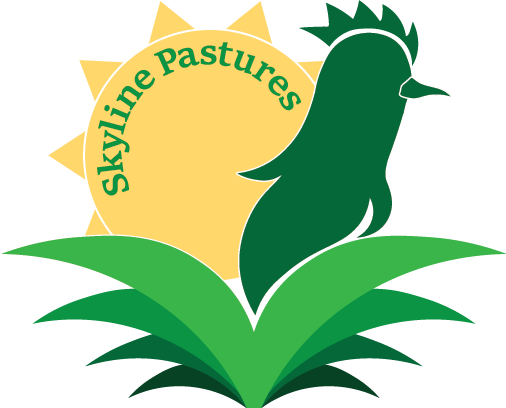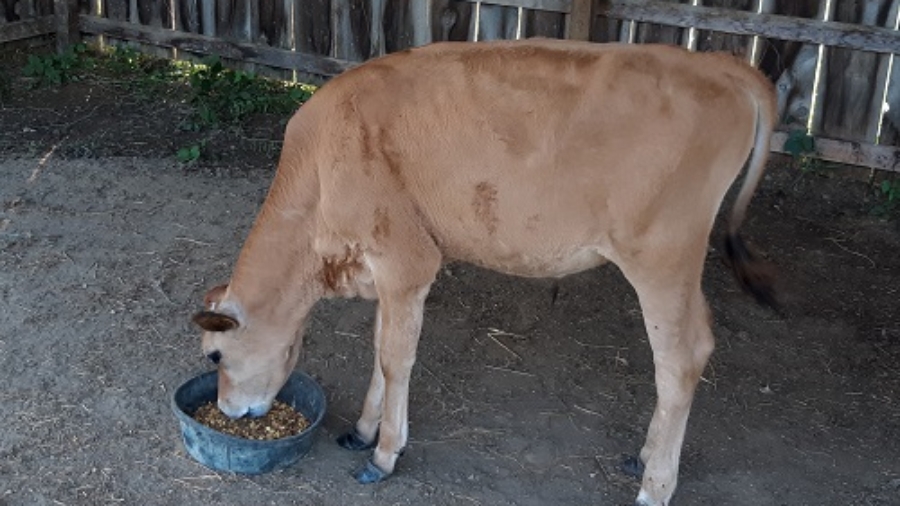Here on the farm we would like all of our animals to be fed in the most natural way. How they were intended to eat. What they were designed to eat. What is natural for them and in turn natural for us. This has been our principal since we started this adventure and it is very important to us.
However, we also assumed that would be an easy feat. Cows and donkeys eat grass, so stick them in the pasture and let them eat grass. We have large pastures, plenty of room for the animals we have, so we didn’t expect an issue with feeding in this fashion. Turns out, this has only worked well for Jasper the donkey.
We are learning that there is so much more involved with this method of feeding. It is definitely not as easy as we thought. There are many things that we did not take into consideration. Some of it was just us rushing into things, excited to begin our farming journey, not researching enough beforehand. We have taken the learn as you go route, which sometimes I feel is the best way. While research is helpful and informative, things often look easy in principle but the reality is things are often quite harder than you expected.
There has been such a learning curve with the cow. As you know, due to our inexperience and knowledge of cow breeds and feeding requirements of young calves, we almost lost Cow Cow in the beginning. We learned from that experience and got him healthy again. He is getting milk and grain due to his requirements for now but he will soon be off of the milk feedings. CJ would like him to then be grass fed at that point instead of grain fed. There are the problems with that though.
He is a Jersey breed, a dairy breed. It is just not in his genetics to get as big as a typical breed (say Holstein or Angus) used for beef. That is not to say you can’t feed a Jersey beef cow on grass, however, it will take much longer to achieve that goal than we were expecting. We would be looking more to 5 years or so with him being grass fed vs 18 months or so on grain.
Pasture quality is also an issue. While we have a large pasture (about 3 acres) just for him, it is the quality of that pasture that is important. All grass is not considered equal in the pasture. There are different types that are more beneficial to different animals. There are plant types that are poisonous. We are not sure what specific grass we do have in the pasture, so it’s hard to ensure he will get what he needs. We do know that the pasture is overrun with various types of weeds. We have an exorbitant amount of Milkweed, which is poisonous to cows. The height of the grass is also an issue. It is too much pasture for the cow to handle. He can’t possibly keep it down, so we must mow. This causes another issue. For one, we don’t have a mower that can handle the taller grasses. Typically in order for the grass to have as much possible nutrients for the cow, it must be kept in the vegitative state, where it is producing more energy to grow, thereby transferring that energy to the cow when he eats it. No more than about 6 inches high. If it gets too tall and goes to seed, it is no longer producing enough energy for the cow to convert when he eats it. Our mower only goes about 3 inches high, which may keep the grass too short for him. The taller grasses/weeds in our pasture have already gone to seed, which means it will do nothing for him nutritionally, and our mower can not handle it to mow it down.
I am still nowhere near an expert on cow nutrition, but what I have learned leads me to believe that we will not be able to feed him a grass fed diet alone. From more experienced farmers, we have been told that to eradicate the weeds that have taken over the pasture, we need to spray the field. This does not sit well with CJ, and his adamant choice to not use chemicals. Our only other option would be to continually mow the pasture and hope that over time we can control the weed growth while allowing more grass to grow. This option will take too long to prepare the pasture for feeding a cow that needs to eat now.
CJ has argued that in the wild, a cow would eat nothing but grass and thrive. The problem with this theory is that in the wild (and current grass fed farm practices), a calf would have been able to nurse from its mother for at least 6 months before grazing grass or turning out to pasture. This has not been the case with Cow Cow and we are not prepared to continue milk feedings for that long. Also, in the wild, cows were not limited in the area they would graze. They had unlimited access to search out the types of grasses that were best suited for their needs. Cow Cow does not have that option. He is confined to the pasture we have for him and the nutrients it provides.
For now I think that we will continue to feed the cow grain so that he is healthy and gains the appropriate amount in the time frame we were expecting. While this is not what we had hoped to do, there is still much we need to accomplish and learn before attempting a grass fed only beef cow. We will have to be content in the fact that we know where that feed comes from, what exactly is in it, that he is treated properly, and that he will live a life well taken care of.
I am currently enrolled in a Pasture Management course from Penn State to learn all that I can to prepare us for that future. We have a great resource in Oley Valley Feed Mill, and Brian there has been an amazing help to us. He is always willing to take the time to help us, educate us, and goes the extra mile for us whenever we visit.
I look forward to learning more so that in the future we can move towards grass fed only beef.


It’s all a learning process. And I know how dedicated you are to making this dream a successful venture. I also know how picky you are about what your animals eat. So I know he will be well taken care of.
It is a learning process! It can be overwhelming at times, but we are dedicated and we are learning more each day!